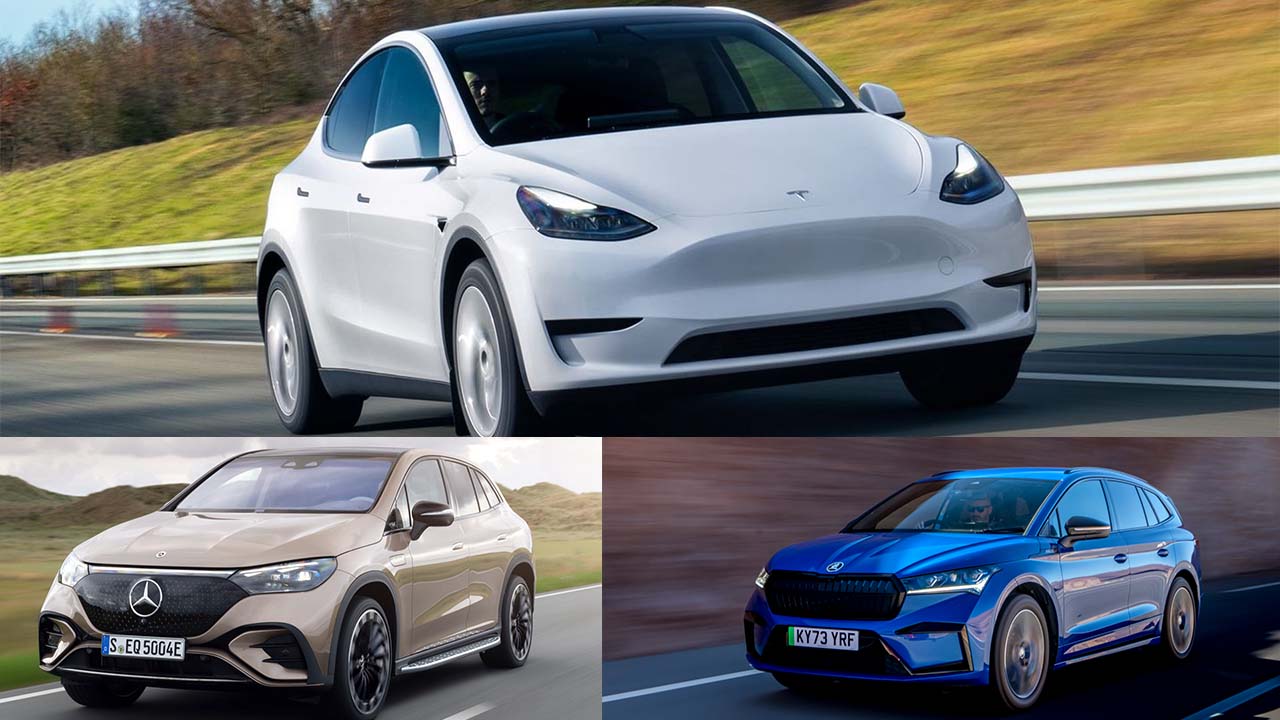More manufacturers are embracing electric technology than ever before, and the market is now overflowing with options that combine a smooth, silent performance with long ranges, all while maintaining the practical versatility of an SUV.
It’s easy to understand why this trend is gaining momentum. Whether you love them or dislike them, the best electric SUVs strike an impressive balance between long-range performance and cutting-edge technology, with many showcasing unique designs that stand out in a way you wouldn’t expect from other sectors of the automotive market.
From affordable models to high-end luxury vehicles, this list covers the top options for 2024, catering to a variety of driving needs and budgets. Currently, we believe the Skoda Enyaq stands out as the best electric SUV available, and we’ll explain why below.
Before diving in, let’s clarify our definition of an SUV. Unfortunately, there are no strict guidelines for this category, so for simplicity, we’ll exclude C-segment hatchbacks, crossovers, and SUV-like models such as the Kia Niro EV and Smart #1, which are covered separately in our Best Mid-Sized Electric Cars list.
Now, let’s dive into the electric SUVs leading the way this year.
1. Skoda Enyaq
Pros
- Impressive range
- Very spacious
- Comfortable interior
Cons
- Some quirks in drivability
- Slightly firm ride
- Lower trims compromise on equipment
Best for: All-around capability
In our opinion, the Skoda Enyaq is currently the best electric SUV available, offering the finest balance of affordability, practicality, range, ease of use, and overall drivability.
While the Skoda Enyaq may not excel in one particular area like some of its competitors, it shines as an outstanding all-around vehicle.
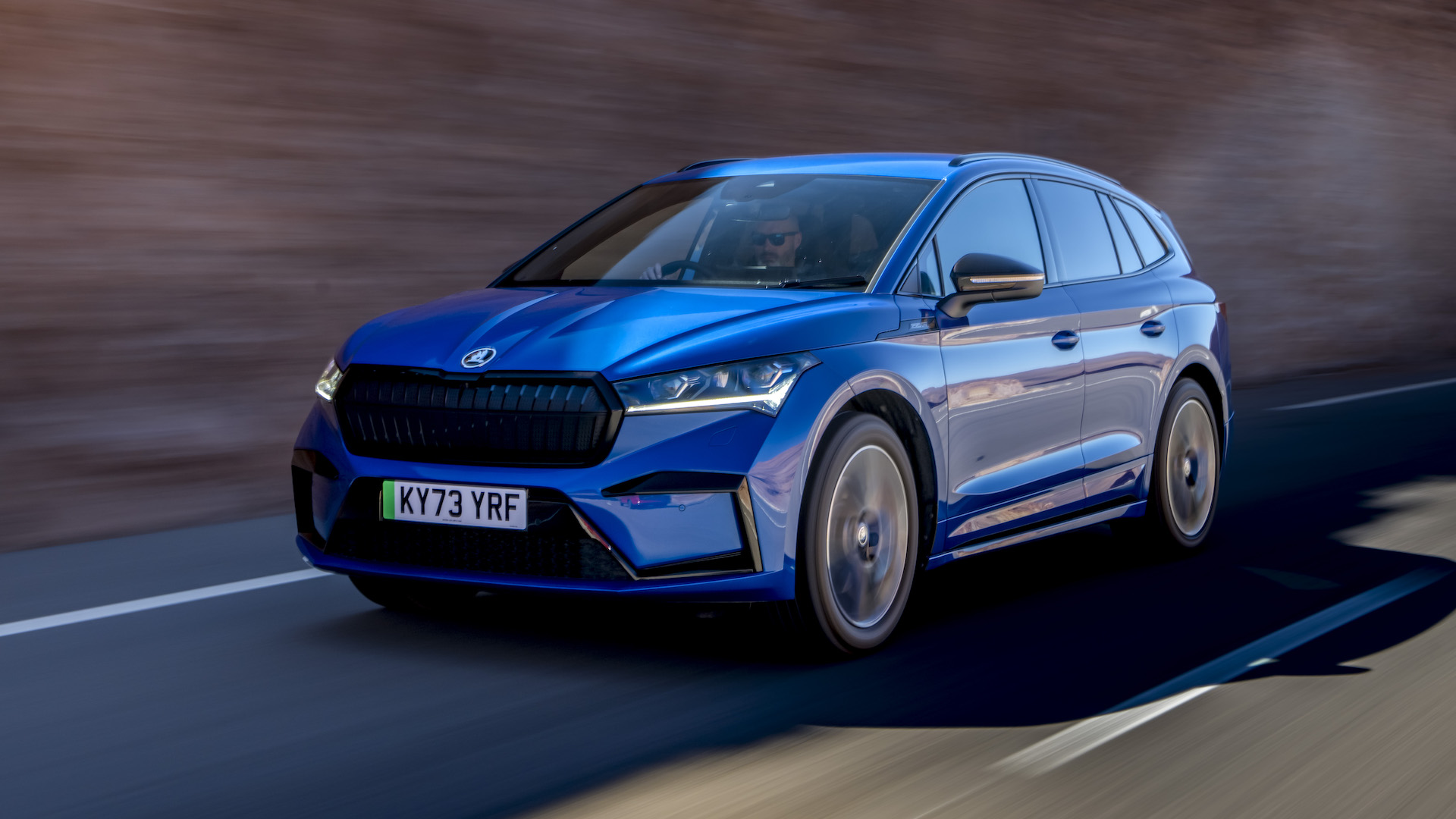
When it launched in 2021, it made better use of the Volkswagen MEB platform than the VW ID 4 or Audi Q4 E-tron that came before it. Recently, the Enyaq has also undergone a round of subtle updates, addressing its few minor shortcomings.
Our top choice from the Enyaq lineup is the 85 Edition, which comes equipped with a large battery offering a range of 348 miles, along with almost all the essential features as standard.
The revamped multimedia system has had its previous issues resolved and is now much more user-friendly.
The Enyaq’s short bonnet and squared-off rear provide ample interior space. It comes standard with adaptive cruise control, and the paddles for regenerative braking make it intuitive to drive.
The chassis is well-balanced and mature, making the driving experience comfortable, if not particularly exciting.
Also Read: 10 Luxury SUVs Designed for Business Executives & Top Professionals
2. Kia EV9
Pros
- Lots of space
- Good range
- Seven seats
Cons
- May be too large for some
- Can be hard to park
- Cabin materials feel underwhelming for the price
Best for: Seven seats
If you’re in the market for an electric SUV rather than a more affordable, efficient, and better-handling saloon or hatchback, it’s likely because you need a significant amount of space.
When it comes to space, few electric SUVs do it better than the expansive Kia EV9. While the Mercedes-Benz EQS SUV surpasses it in terms of absolute interior volume, the Benz is even more expensive, and its space isn’t quite as versatile.
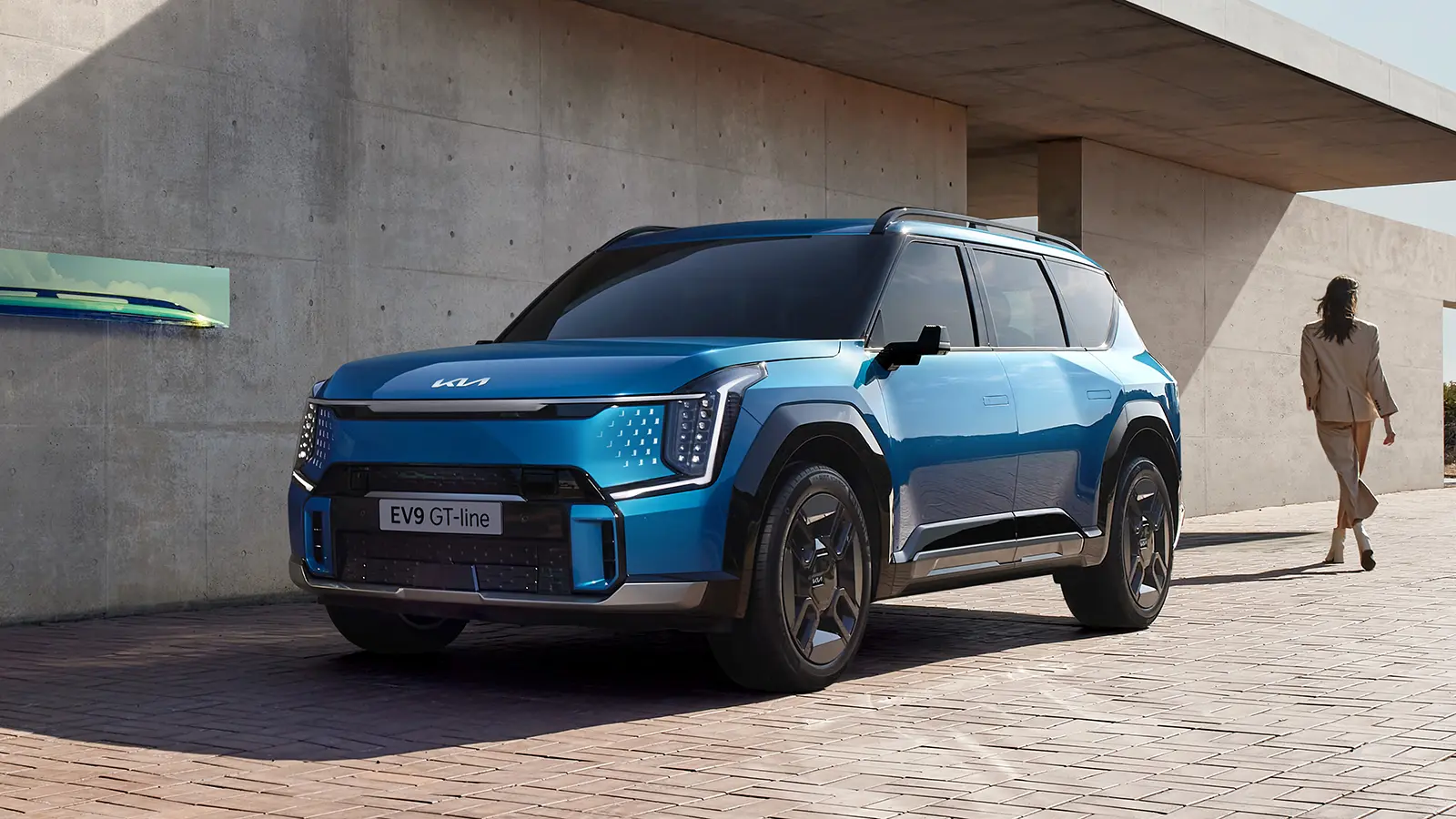
The EV9 makes the most of its ample size with a larger glass area, seats that fold and tumble more easily, and a front luggage compartment to store the cables. The EV9 isn’t just a large vehicle it’s a thoughtfully designed one.
As with the Kia EV6 and Niro EV, the EV9 also delivers a highly refined driving experience. The dual-motor versions offer strong performance, though the upcoming single-motor model is likely to be the most popular.
Additionally, steering wheel paddles make it easy to control regenerative braking. The EV9 is also a stylish choice for a seven-seat SUV, offering commendable luxury, efficiency, and range.
If you’re seeking a more affordable option than the £65,025 EV9 or don’t need seven seats, the Skoda Enyaq or Tesla Model Y would be great alternatives.
3. Polestar 3
Pros
- Stunning looks
- Dynamic driving style
- Impressive range
Cons
- Expensive
- Heavy reliance on the touchscreen
- Performance pack is hard to justify
Best for: Standing out
The largest model from Polestar is also one of the finest electric SUVs you can buy today, and it has a lot to offer. The Polestar 3 is a spacious electric SUV packed with next-generation technology, and its design is unlike anything else on the road.
It’s powerful too, with outputs ranging from 483bhp to 510bhp. Power is supplied by a 107kWh battery, which allows for a range of up to 390 miles, or 348 miles if you opt for the Performance Pack. It can also charge at impressive speeds of up to 250kW.
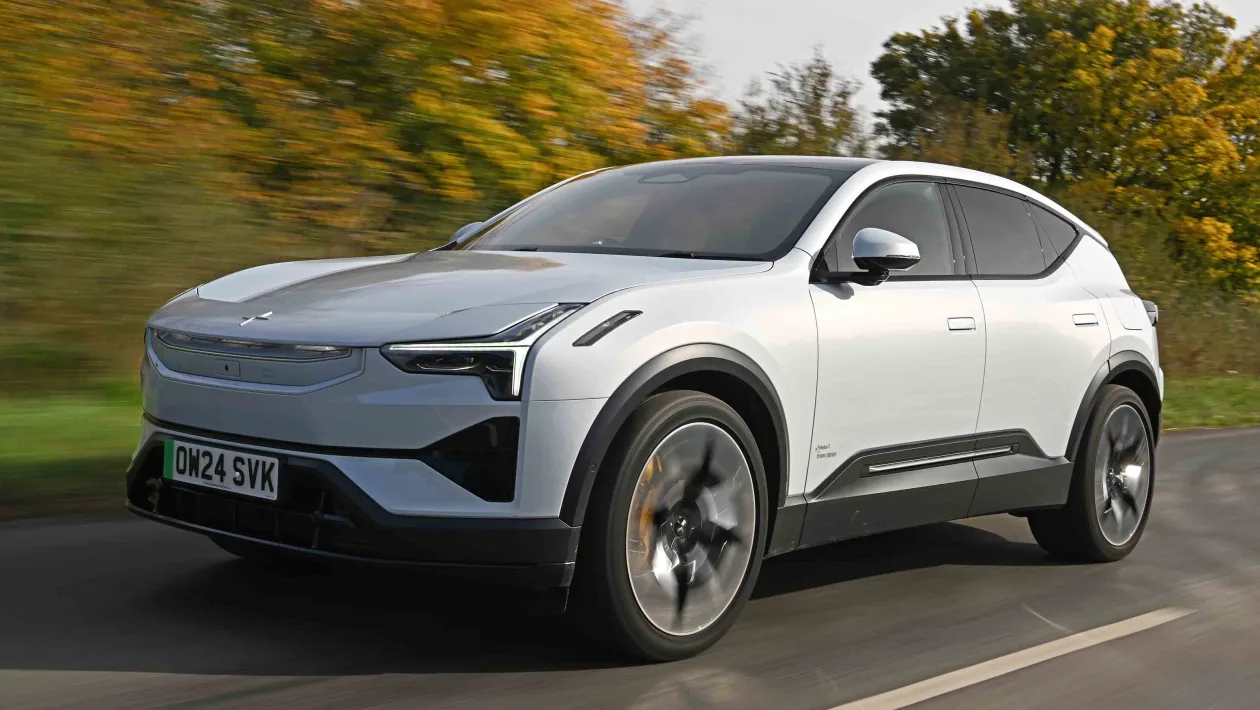
Inside, the Polestar 3 is airy and luxurious, featuring chrome-effect materials and recycled, soft-touch textiles.
The large touchscreen at the center of the dashboard integrates Google Maps, and the system offers wireless smartphone connectivity through Apple CarPlay and Android Auto.
Despite its size and a hefty 2.5-tonne kerb weight, the Polestar 3 is a pleasure to drive, especially at higher speeds.
Its precise and tactile handling sets it apart from many rivals in the segment, proving that large electric SUVs can also be fun to drive.
4. Ford Explorer
Pros
- Impressive range
- Strong performance
- Good standard equipment
Cons
- Uninspiring exterior design
- Heavy build
- Single-motor version has a firm low-speed ride
Best for: A balance of range and equipment
The Ford Explorer may not turn heads with its appearance, but our test drive showed it to be a commendable electric SUV with plenty of positives. This is especially important since the model’s launch had been delayed significantly.
Built on Volkswagen’s MEB platform, the Explorer is more than just a rebadged ID 4. It surpasses many of its competitors, including the Tesla Model Y, in terms of driving experience, and its interior is both practical and spacious.
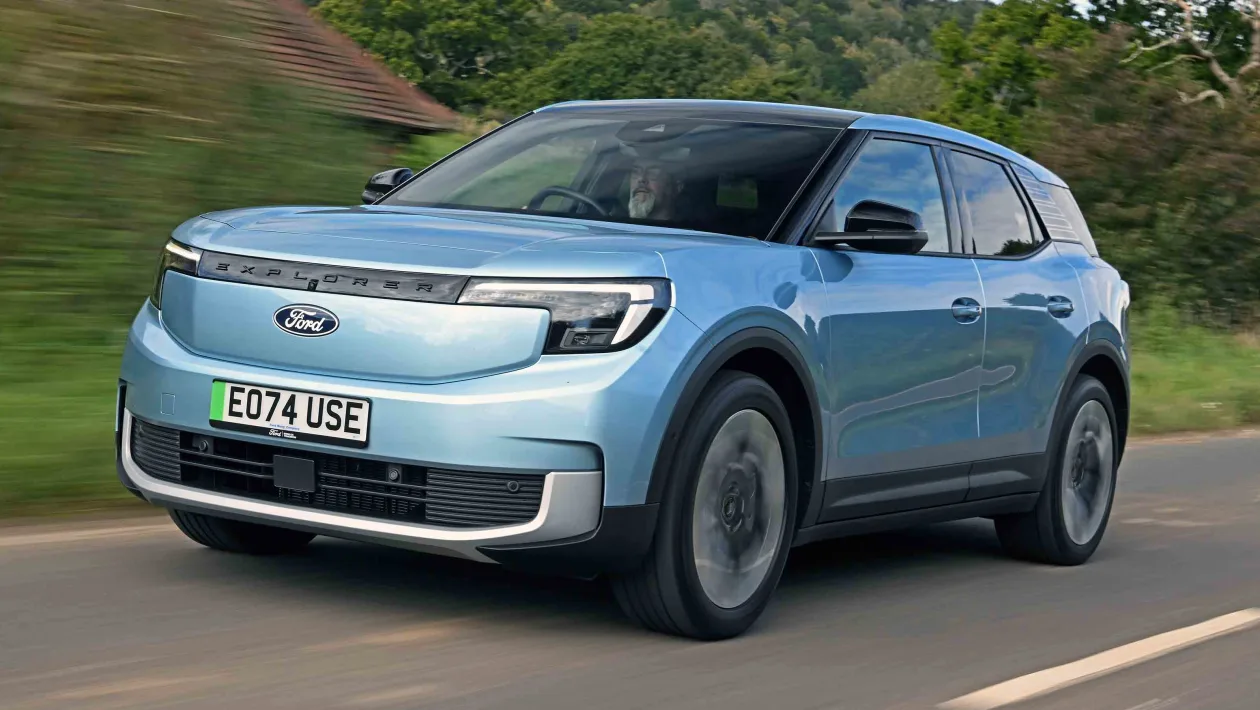
It also boasts excellent range figures for its class. The entry-level model, with a 52kWh battery, offers a range of 239 miles, while the top-tier 77kWh battery extends that to 374 miles the highest range achieved by any car based on the MEB platform so far.
The Explorer’s power output starts at 168bhp on single, rear-motor models and reaches up to 335bhp in the all-wheel-drive, dual-motor, extended-range variants.
All this, combined with an entry price of under £40,000, makes it a very appealing option.
The Explorer stands out with its excellent standard features, which include a large, well-positioned touchscreen, heated and massage seats, and a comprehensive suite of safety features, all included as standard.
5. Kia EV6
Pros
- Up to 361 miles of range
- Rapid EV6 GT variant available
- Agile handling
Cons
- Over-reliance on touch controls
- Uncommunicative steering feel
- Braking may take some time to get used to
Best for: Stylish looks
The Kia EV6 is an outstanding electric SUV that caters well to family needs. It’s comfortable, offers impressive range, and is extremely quick in its most powerful configuration.
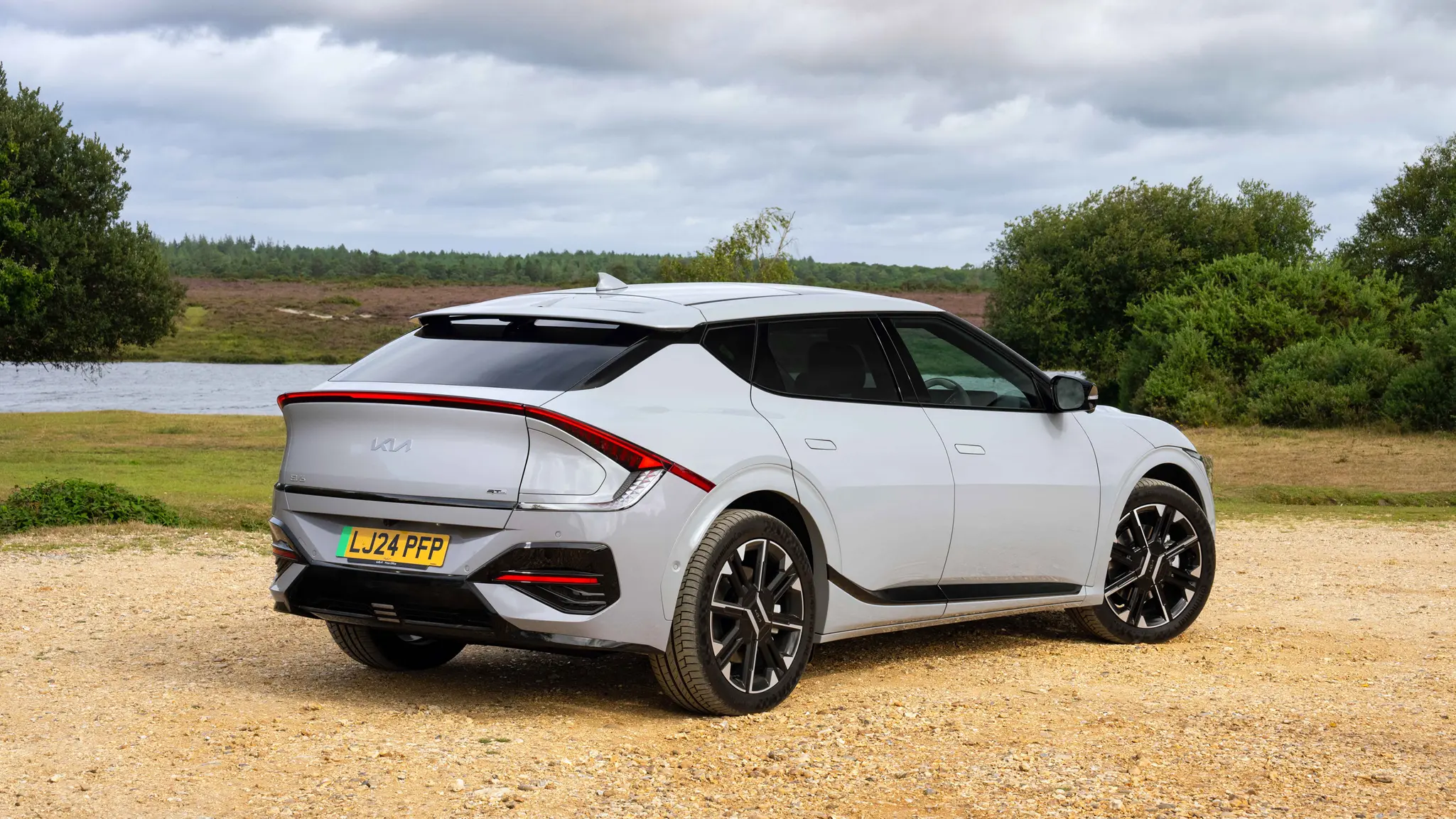
In its most efficient version, the EV6 provides an impressive 361 miles of range, and its charging speed is among the best in its class at 258kW. Power starts at 226bhp, which is more than sufficient for most drivers, but the top-of-the-line Kia EV6 GT delivers a powerful 577bhp.
While the Kia EV6 shares many components with the Hyundai Ioniq 5, it outshines its sibling in terms of driving experience, offering precise steering, good handling, and a smooth ride.
If you want an electric SUV that combines sporty driving dynamics with enough space for the family, a well-equipped interior, and a stylish coupe-like design, but don’t need the seven seats of the EV9, the Kia EV6 is a perfect fit.
Also Read: 12 Secret Features Hidden in Popular Cars That Will Surprise You
6. Tesla Model Y
Pros
- Class-leading in several areas
- Long-range and performance variants
- Spacious boot
Cons
- Needs an update (which is on the way)
- Uninspiring looks
- Questions regarding material quality
Best for: Boot space
The Tesla Model Y is due for a significant update, but even now, it remains one of the most efficient electric SUVs on the market.
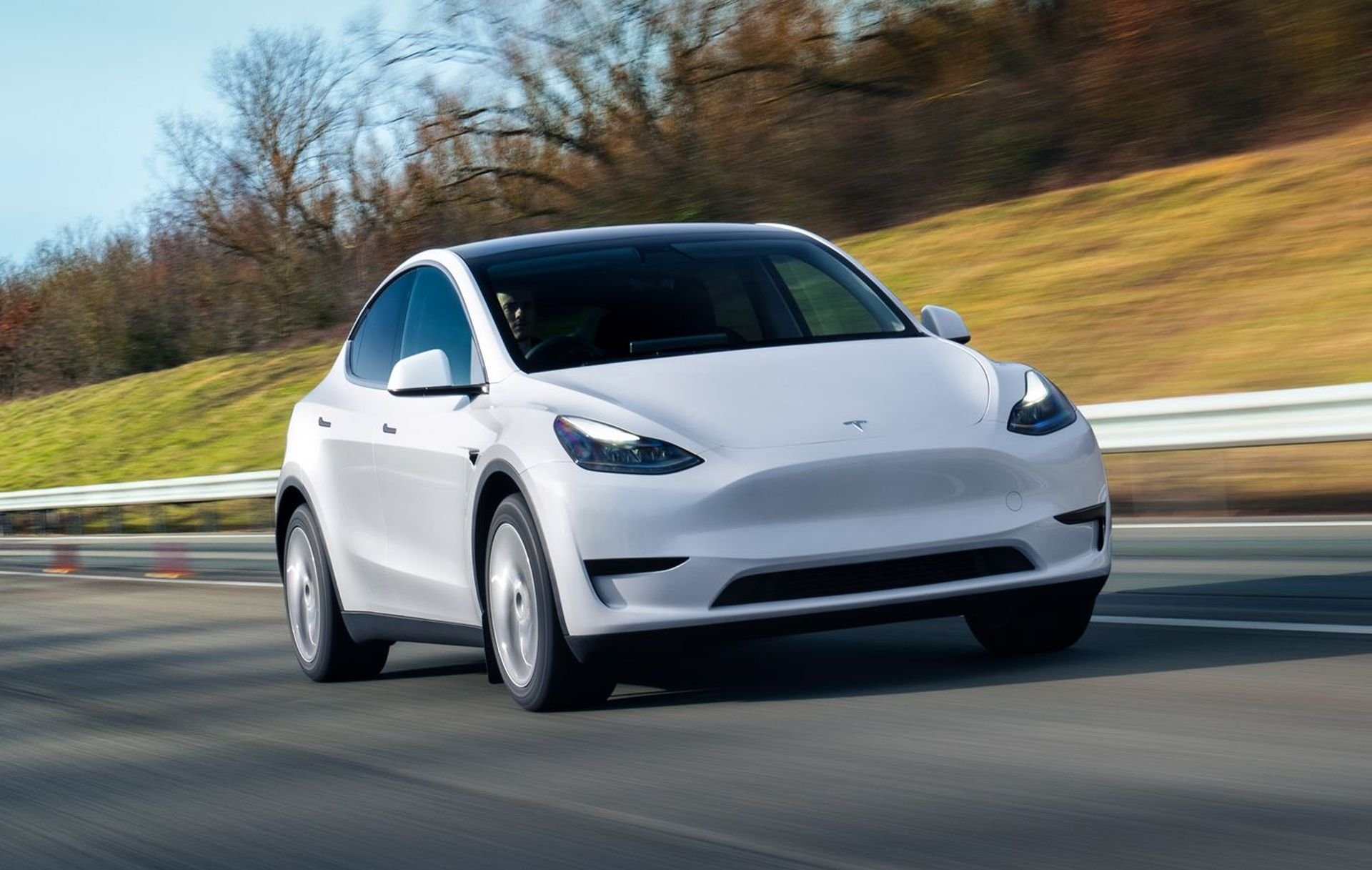
Since its launch in 2021, the Model Y has faced increased competition, but it still delivers a competitive range, offering 283 miles as standard, or 331 miles with the long-range models. In real-world driving, it comes close to those numbers, thanks to its impressive efficiency.
Tesla’s minimalist design for both the interior and exterior may not appeal to everyone, and the driving experience can feel somewhat prescriptive. However, the Model Y excels in core areas: it is incredibly spacious for its size, offers good value, is fast, and can be fun to drive.
The closely related Model 3 has recently undergone updates to enhance efficiency, comfort, and interior quality. These improvements will eventually make their way to the Model Y as well.
7. Hyundai Ioniq 5 N
Pros
- Immense power
- A landmark vehicle for performance EVs
- A true performance-focused option
Cons
- Not the best choice for everyday duties
- Touring efficiency isn’t impressive
- Cabin feels somewhat ordinary compared to pricier options
Best for: Performance
Who said SUVs can’t be fun to drive? And who said electric vehicles can’t be thrilling? Hyundai made a significant impression on car enthusiasts with its first petrol-powered hot hatchbacks, the Hyundai i20 N and i30 N, both of which were highly praised right from the start.
Now, Hyundai is bringing that same performance pedigree into the electric era with the performance-oriented Hyundai Ioniq 5 N.
The Ioniq 5 N is more than just a car with a stiff suspension and heaps of power though you do get both of those.
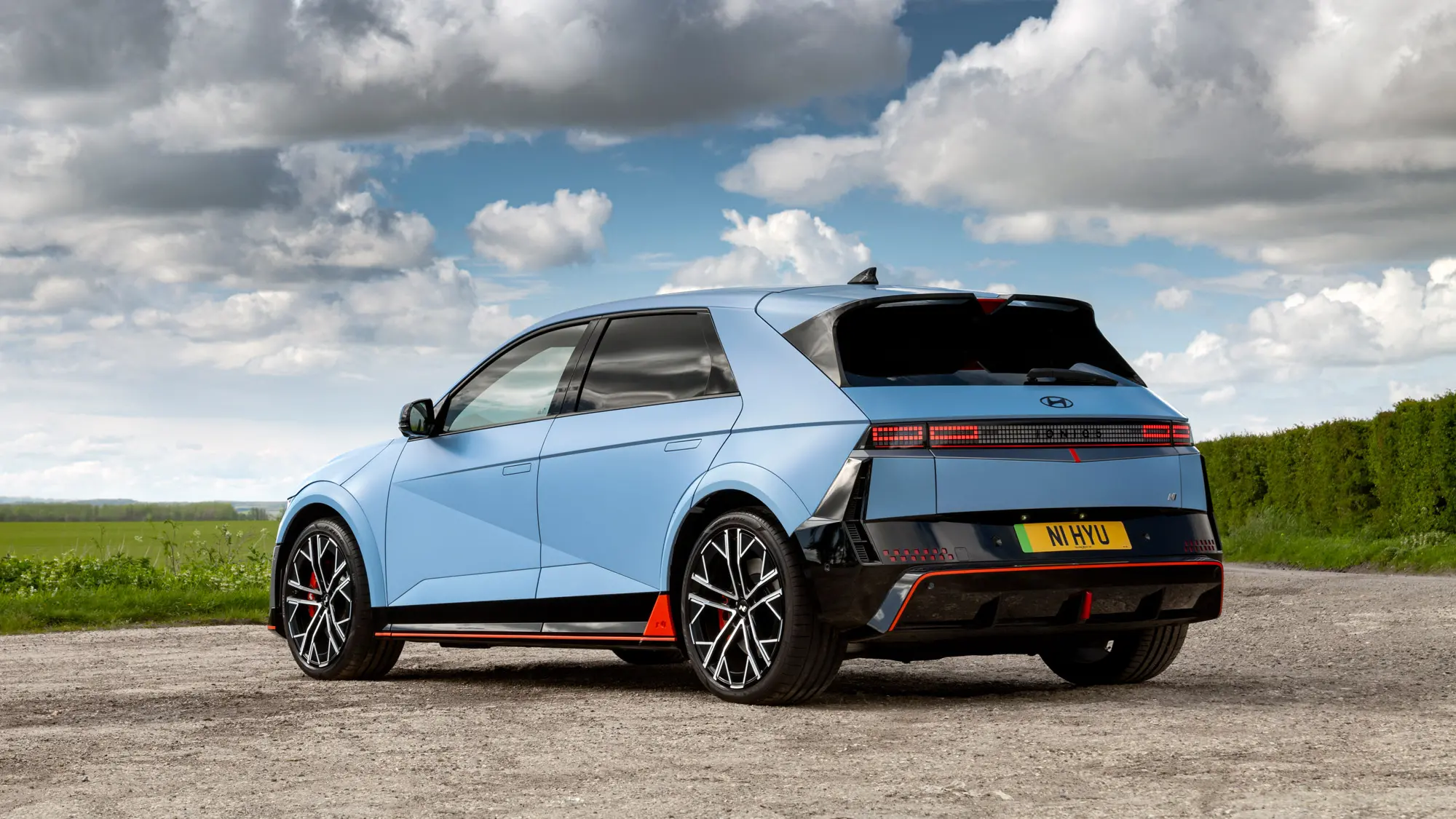
Thanks to a reinforced chassis, a proper limited-slip differential on the rear axle, adaptive dampers, and Hyundai’s engineers’ playful approach, it offers a genuinely entertaining driving experience.
It can effortlessly rotate on and off the power, and if you prefer, it can simulate a six-speed gearbox and a petrol engine.
Autocar’s Matt Prior stated in his review: “I think this is a landmark car. The first genuine EV driver’s car. A car we could bring along to Britain’s Best Driver’s Car in 2025 and be confident it’ll perform well.
Not because it makes brmm noises, but because the tuning is excellent and the engineering feels real.”If the Ioniq 5 N feels a bit too extreme for your tastes, there are other options worth considering.
The BMW iX3 may seem underwhelming on paper due to its single-motor setup, but this actually helps it handle with the precision expected from a true BMW. While the Jaguar i-Pace isn’t as modern as some competitors, it remains enjoyable to drive.
8. Mercedes-Benz EQE SUV
Pros
- Class-leading comfort and refinement
- Four-wheel steering
- Packed with advanced technology
Cons
- Expensive
- Longer-range options are available for a similar price
Best for: Comfort
If you prefer the car to handle more of the driving for you, modern luxury cars are packed with assisted driving technology. While some features may be frustrating and intrusive, others can make long or monotonous drives far less stressful.
Mercedes-Benz was the first to offer a true adaptive cruise control system in 1999, and it still arguably offers the most mature system on the market.
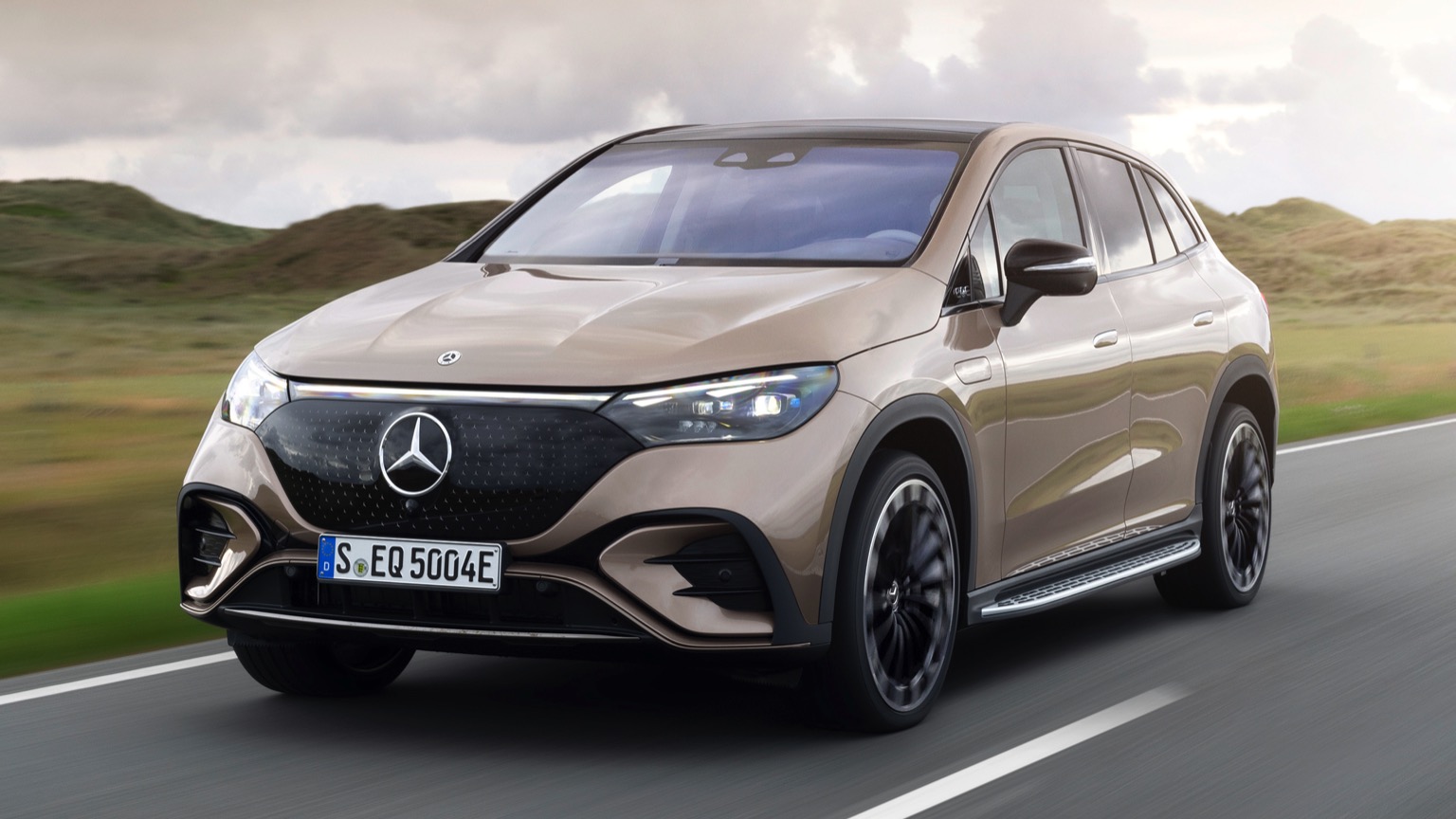
The system is smooth and unobtrusive, gradually slowing down when other vehicles cut in, rather than abruptly applying the brakes.
The steering assistance is also smooth, and when traffic halts, it positions itself in a way that allows lane-splitting motorcyclists and emergency vehicles to pass by. Features such as lane-keeping assist and overspeed warnings are discreet and easy to deactivate.
BMW’s iX also offers impressive adaptive cruise control, and while earlier versions could be a bit unpredictable, the latest Skoda Enyaq system is smooth as well.
While Tesla’s Autopilot is highly advanced in the US, European models feature a more basic version that doesn’t measure up to the other systems in this category.
9. Genesis Electrified GV70 SUV
Pros
- Plush interior
- Sports car-level performance
- Comfortable
Cons
- Older model in a competitive market
- High price tag
- Range is now considered subpar
Best for: Classic luxury feel
Often overlooked, the Genesis Electrified GV70 should definitely be considered when creating your shortlist, though it may not be for everyone.
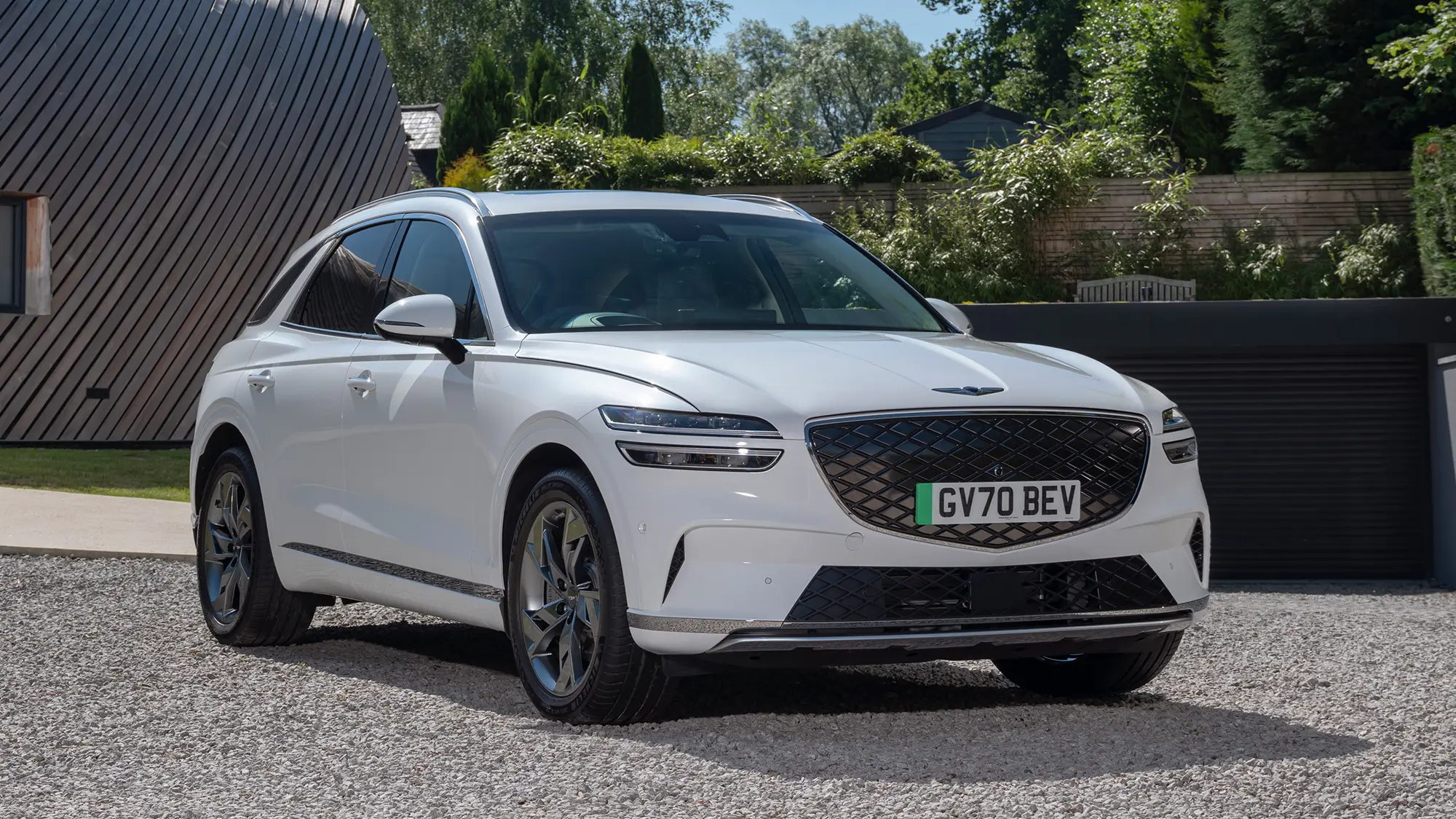
The Electrified GV70 caters to those seeking a luxurious, ultra-fast electric vehicle while still maintaining the aesthetic and feel of a traditional car. It’s available in a single configuration with a 77.4kWh battery offering 282 miles of range.
While this is a bit behind the leading EVs in terms of range, its 483bhp engine puts it in direct competition with more performance-focused models. With this power, it can accelerate from 0 to 62mph in just 4.2 seconds.
The interior of the GV70 remains one of the best in its class, offering top-notch materials, comfort, and superb noise isolation. If this model doesn’t suit your tastes, Genesis also offers the excellent GV60.
10. BMW iX
Pros
- Pure luxury
- Longest electric range for an SUV available in the UK
- Handles weight distribution effortlessly
Cons
- Exterior styling is divisive
- Manual regeneration control could be improved
- The cost of options can quickly add up
Best for: Luxury
BMW has long been known for its “Ultimate Driving Machine” tagline, but as roads get busier and more restricted in speed, it’s clear that the definition of ultimate driving is evolving.
With its electric vehicles, BMW has started focusing on comfort, and this is evident in the BMW iX, much like it was in the BMW i7, which won our ultimate luxury car test.
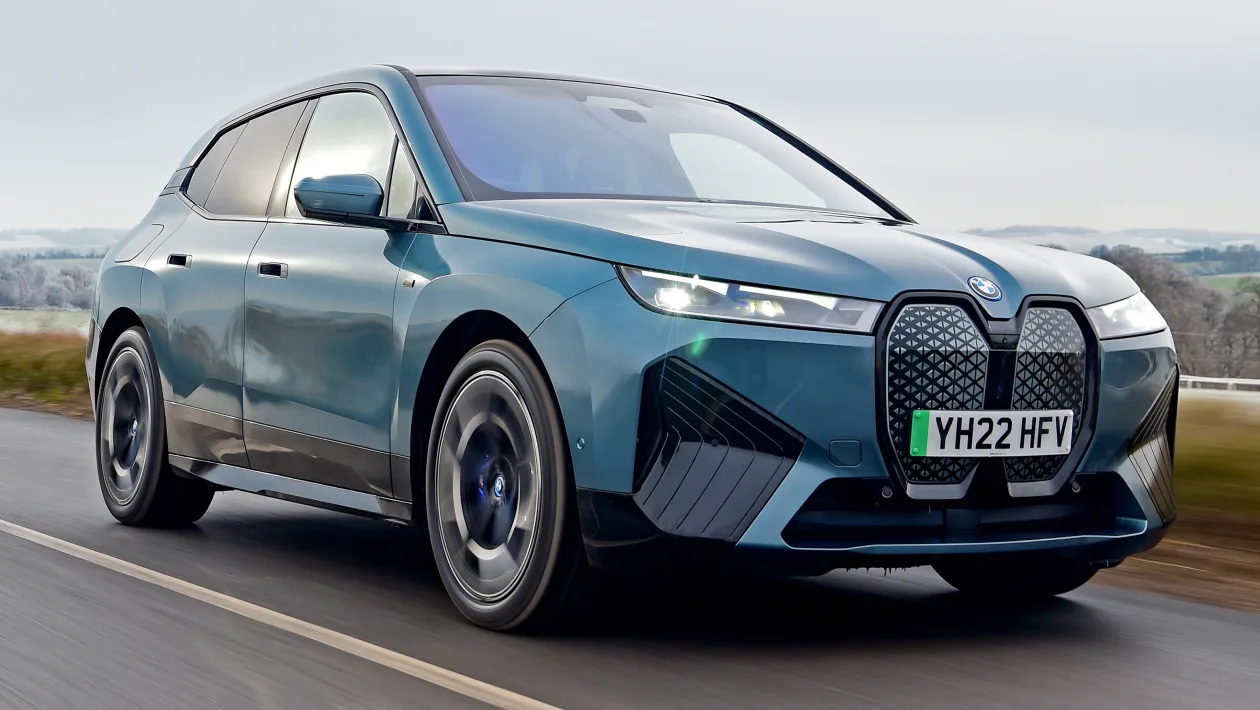
The iX delivers world-class refinement, smooth driving performance, instant acceleration, and impressive real-world range. Inside, the iX feels more like a large, ultra-luxurious BMW i3 than the sporty saloons BMW is traditionally known for.
The interior offers a lounge-like feel with spacious layouts, soft contours, and in some trims, an array of unusual yet appealing materials.
For the best experience, opt for the xDrive50, as the xDrive40 lacks the more advanced air suspension and long-range capabilities that make the iX stand out.
While the Mercedes EQS SUV and EQE SUV may be more high-tech, they don’t match the BMW iX in terms of build quality and the luxurious materials used inside.
For a similar experience at a lower price point, the Genesis GV60 and Electrified GV70 both offer a traditional luxury feel, and the Lexus RZ is also a beautiful place to spend time though it may not have the same impressive EV credentials.

